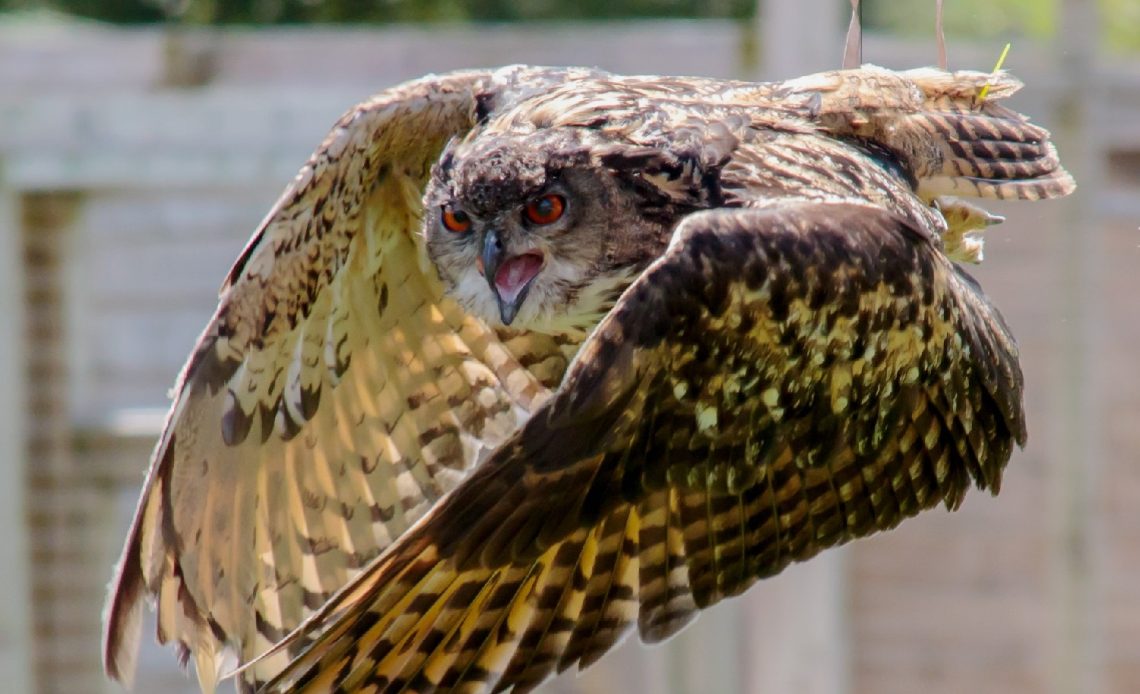

We’re here to help! Wild Yards is a completely free website that is 100% dedicated to helping you create a wildlife-friendly, sustainable yard. Read more
WildYards is reader-supported. When you buy a product through a link on our site, we may earn a comission. Every product is independently selected by our (obsessive) editors and our reviews are unbiased and objective. Read more about our mission or our privacy policy.
Owls are highly mysterious creatures. Seen as wise and sometimes aloof, they’re also famous for being amazing apex predators and skilled hunters. With that in mind, do owls attack humans?
Owl attacks are fairly rare, though they typically won’t cause you much harm. Owls can be extremely territorial and work hard to protect their nests and hunting grounds. If you infringe on that in any way, you may find your local owls trying to send you a message! Thankfully, there are ways you can stay safe from owl attacks.
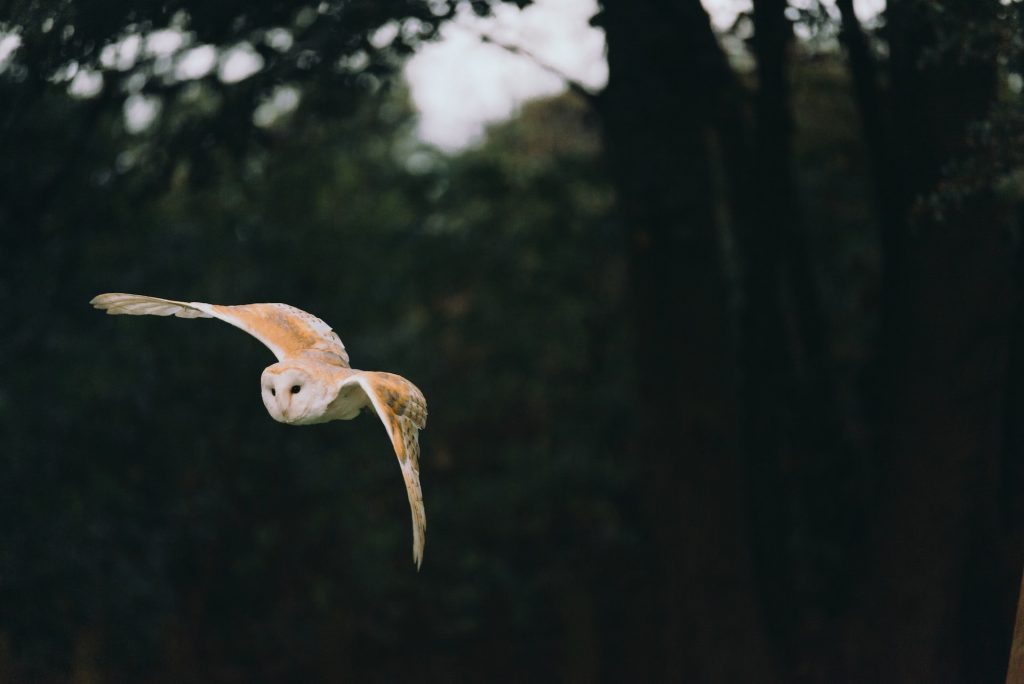
Why might an owl attack me?
Owls won’t attack humans unless they feel particularly threatened. This may be due to an invasion of their space, especially as a result of aggression during their breeding season when they’re most protective of their families.
Typically, owls will offer warning calls to ward you away if you get too close to them or their nesting sites. If you continue encroaching on this space after a warning, an owl may attack you by swooping down. This is a ‘dive bomb’ motion that many owl species use to swoop in on prey from above.
Otherwise, young owls may attack people out of simple play and practice. These birds are simply getting used to how their hunting apparatus works – and just like moody teenagers, some owl youngsters can ‘act out’ if their hormone levels are particularly high.
Owl attacks are generally unlikely as humans have opposite sleeping habits, meaning we rarely encounter them in the daylight. Humans are diurnal creatures (that sleep at night), while owls are mostly nocturnal (they hunt at night). That’s not to say owls won’t be protecting their nests during the day, which is all the more reason to take care walking close to their natural habitats.
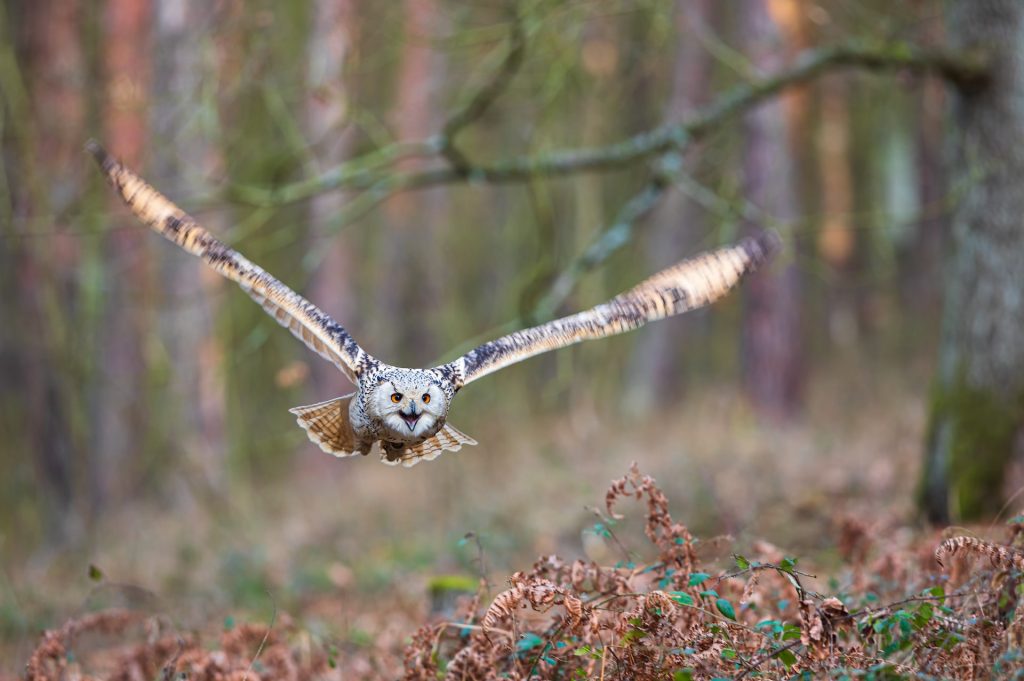
Can owls harm or kill me?
Owls can cause harm if they catch you with their impressive talons – bigger species have up to five times the grasping power as human beings and a talon grip comparable to a dog’s bite. It’s likely to hurt, break the skin, or worse – depending on where you are caught.
An owl attack will rarely cause more than superficial trauma, meaning you will unlikely need to go to the hospital. It’s even rarer that an owl attack will result in death. Given how owls attack, however, they will most likely strike your head, which may leave you with scalp scarring or lacerations.
In some grim cases, large owl attacks may cause eye damage – an aggressive owl can leave someone blind, though it’s incredibly unlikely.
Regardless of the damage an owl can or cannot do, an attack is still likely to hurt – and if they break the skin deep enough, you may need an emergency tetanus shot.
Can an owl pass rabies to me?
Owls don’t carry rabies, meaning there’s no danger of you contracting the disease from an unexpected attack. Rabies only impacts and spreads via mammals – and kills up to 60,000 people every year worldwide.
An owl scratch or bite will still need careful cleaning with water and available antiseptic. A deep wound may require medical attention, at least disinfection and dressing. Be sure to get a tetanus shot if your skin breaks and you are bleeding, as bacteria will still fester in your wound(s) if left untreated.
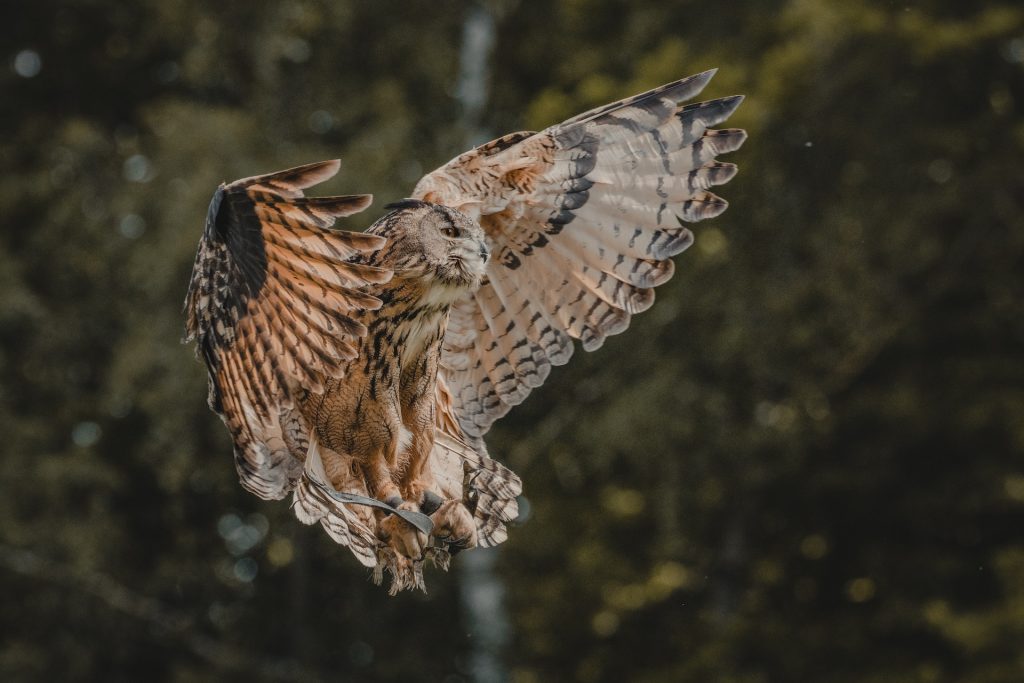
Why are owls so dangerous?
Owls are some of the fastest, most vicious predators in their habitats, and while they may not look like cold-blooded killers, they have dangerous apparatus that can cause harm to small and larger beasts alike.
Owl talons have evolved to pick up and tear into small prey, and they move almost silently when stalking for food and swooping down to attack. Owls may even attack animals larger than themselves if they know they have an advantage in speed.
Owls have remarkable eyesight, making them extremely dangerous for prey around them for up to a mile. They can turn their heads 270 degrees, allowing them to almost completely survey an area at short notice.
How to avoid an owl attack
Avoiding an owl attack may be as simple as knowing your surroundings – are you heading into an area where owls are building nests or where they hunt regularly? Even if you don’t intend to upset an owl, wandering into their family zones and not listening to their calls may encourage an attack.
It’s all the more reason to listen carefully for owl hoots and calls as you walk around. As nocturnal beasts, you likely won’t hear many calls during daylight hours. If, however, the hooting gets very loud and/or more frequent, it may be a sign that a local owl feels threatened by your presence – and it’s then best to turn around.
It’s a good idea to show owls some respect – even if you are an avid birdwatcher, encroaching on any species’ space invites aggression. If you can, try and photograph or film owls from afar. You’ll lower the risk of getting attacked and give your local owls a little more space.
It may even be good to invest in an umbrella if you have to walk through owl habitats at night. Carefully hold it above your head while walking for extra protection against potential dive bombs. Alternatively, head protection such as a helmet or hard cap will protect you from scratching and laceration.
If you’re getting attacked by owls in your own yard or outside your home, it may be worth investing in a scarecrow or lighting to discourage visitation. Owls dislike strobe lighting, and you may even wish to trim down your trees. The taller the tree, the more likely an owl will choose it as a nesting spot because it provides them with an ideal hunting vantage point.
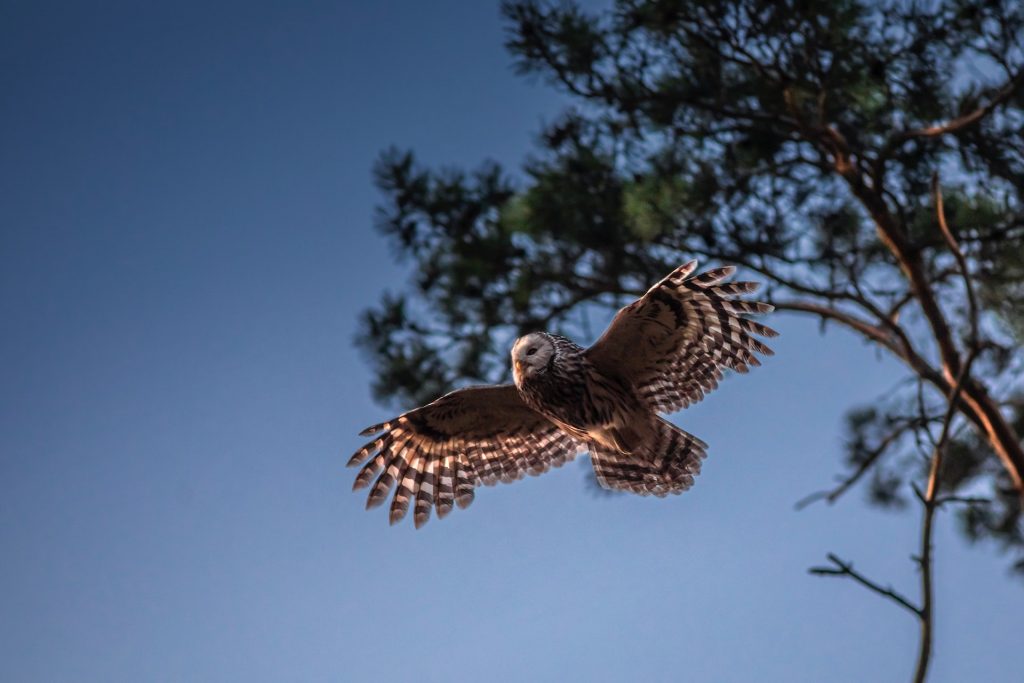
What you need to do if an owl attacks you
If you spot an owl swooping in for the attack, protect your head at all costs. If you don’t have an umbrella, simply cover your head with your arms as quickly as you can. If you don’t have head protection, this will help prevent an owl from causing serious harm – the worst you may expect is a few scratches to your arms and hands.
You should also try and scare away an owl if possible – they hate loud noises and unexpected displays – so be sure to be as loud as possible, throwing your arms around to deter an attack. This may risk waking up other animals (and even people) in the vicinity, but it also encourages an aggressive owl to take evasive maneuvers.
Owls won’t attack people in large crowds unless several of you encroach on their habitat. In the event of getting attacked by an owl, try to move out of its home space as quickly as you can, heading back to civilization if possible. Look for bright lights such as street lamps, as owls won’t follow you if they’re distracted by illumination.
The best action in the event of an owl attack is to simply leave as quickly as you can. An attacking owl has given you the opportunity to turn back – and there are no second warnings. Even if you’re away from built-up civilization, go back the way you came and remember not to take the same route at night again.
Is my pet safe from owls?
Some pets, particularly small dogs and cats, may be at risk of owl attacks. While owls frequently attack prey much smaller than household pets, if a bird is hungry enough, it may choose to dive bomb a bigger animal if left defenseless. Consider your pets’ needs before deciding when to put up an owl box in your yard.
Some owl species, such as the great horned owl, can pick up animals that weigh up to 1.5 times their own body weight – meaning cats and many species of dog are at risk if they’re out late at night. It’s unlikely that most owls will attack larger dogs as they are more likely to fight back – but even smaller pets that make a lot of noise can scare swooping owls away.
Most owls are thought to only be as strong as their bodyweight commands – meaning it’s uncommon that they will pick up prey that’s much larger than themselves. The great horned owl is the exception to this rule – and this species lives across the US.
Don’t put your pets at risk. If you have owls visiting your yard, be careful to watch over your dog at night, and where possible, try and keep your cats inside after sundown – or, alternatively, in an enclosed area.
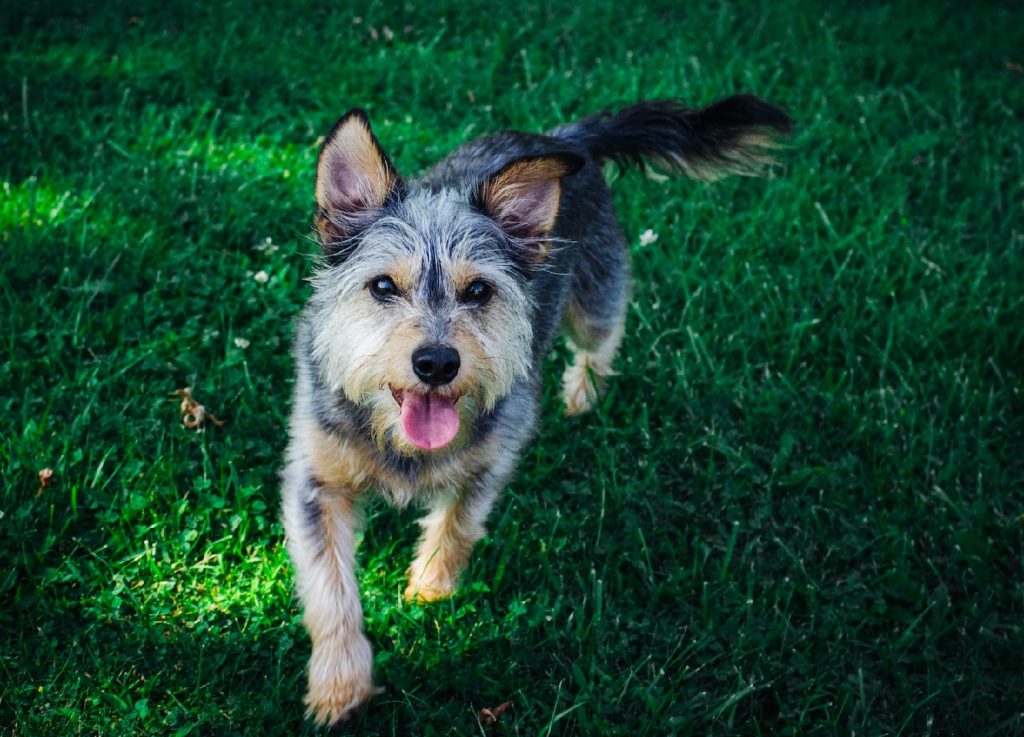
Is it right to deter owls from my property?
While it’s great to welcome various animals to your yard, owls can outstay their welcome if they start to attack your pets or if they are scaring any livestock in your yard or field. It’s humane to keep your yard clear of bird feed at night and to clear up your grounds so that rodents can’t make homes (and therefore provide owls with regular food).
If you don’t want to scare owls away, simply make your yard awkward for owls to visit or set up a nest in. For example, if you keep pets or animals outside in cages overnight, cover them with netting designed to prevent owl attacks. Consider adding bird spikes to tall fences in your garden, too, so owls have fewer vantage points. The downside here, of course, is that you may deter other birds, too.
Attracting owls to your yard holds a few benefits – such as keeping vermin populations low – so balance the pros and cons before taking action.
Can an owl carry a child away?
An owl will unlikely target and carry away a child, especially as most species will only lift up to six or seven pounds of weight in one go. While the great horned owl may carry up to 40 pounds at most, any children of this weight will likely be supervised enough (especially at night) to avoid risk. Moreover, owls will typically hunt prey they’re used to seeing in their local habitat, such as rodents they’ve learned to hunt for during childhood.
What are some of the most dangerous species of owl?
The great horned owl (as you’ll know by now!) is one of the most dangerous predators taking flight across the US. This species has a wingspan of four to five feet in length, and is the only species that actively carries away prey larger than itself. It’s one of the strongest species in the US, too.
The great horned owl will more frequently hunt down small mammals such as skunks and rabbits than focus on attacking humans. You’re much larger than they are – meaning they’re only dangerous to you if you invade their space.
Other potentially dangerous species include the barred owl, which can be stealthy and aggressive if people invade its territory. Snowy owls, too, will attack with intent to deter, though they harm people (and animals) much less frequently in this regard.
Screech owls are famously aggressive when protecting their territories, but it’s a myth that they will do much harm if attacking you. The most you’re likely to expect from this species is a scratch – painful all the same!
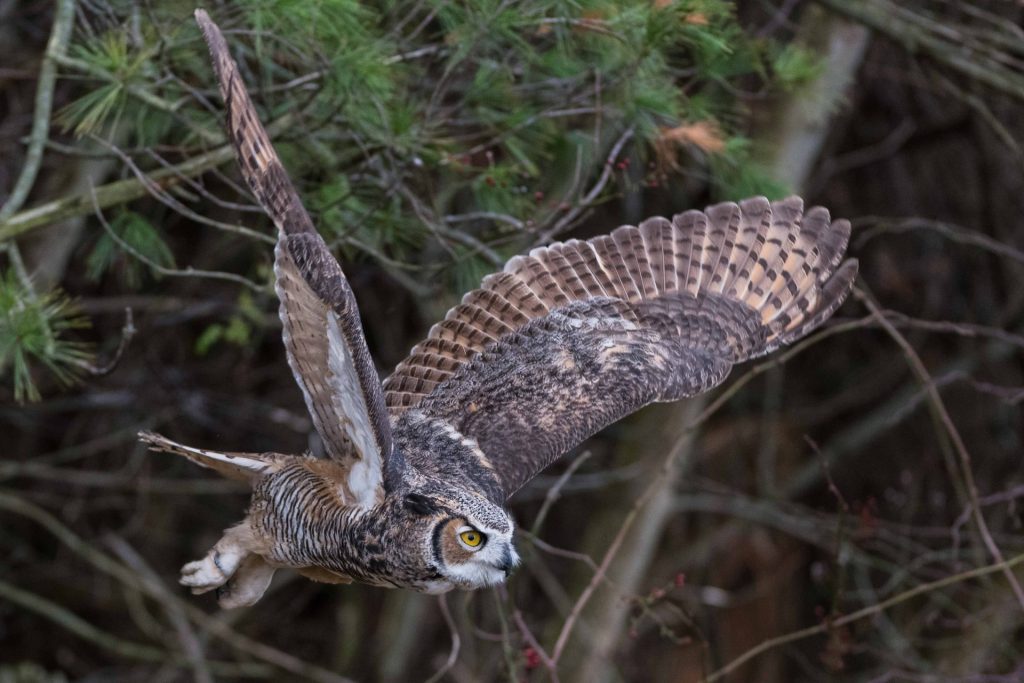
Can owls be friendly?
Many owl species can be friendly and receptive to human kindness, though only typically in controlled settings. Owls are predatory wild animals – meaning they prefer to be left alone to hunt and raise their families rather than make friends.
You have no reason to fear owls across the US unless you venture too far into their habitats. Be sure to listen out for their calls, and avoid trekking into woodland after dark without head protection if you can help. Take special care of pets after dark, too, if your yard welcomes owls regularly (with a nesting box, for example).
Having owls around isn’t necessarily bad luck – but it’s still worth taking precautions.
